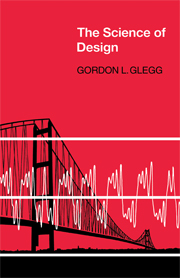Book contents
- Frontmatter
- Contents
- Preface
- 1 The Overall Picture — Plan View
- 2 The Overall Picture — Elevation
- 3 Special Cases
- 4 A Rogue of Variables
- 5 Journeys into Lilliput
- 6 Transformations and Translations
- 7 The Dictatorship of Time
- 8 Looking, Seeing and Believing
- 9 The Consortium
- 10 The Art of Conversation
- 11 Conclusions and Recommendations
- References and Notes
- Index
- Frontmatter
- Contents
- Preface
- 1 The Overall Picture — Plan View
- 2 The Overall Picture — Elevation
- 3 Special Cases
- 4 A Rogue of Variables
- 5 Journeys into Lilliput
- 6 Transformations and Translations
- 7 The Dictatorship of Time
- 8 Looking, Seeing and Believing
- 9 The Consortium
- 10 The Art of Conversation
- 11 Conclusions and Recommendations
- References and Notes
- Index
Summary
To be good at research you must be good at mountaineering. Scrambling up and down the sloping sides of the problem, you must find the highest level at which its essential features can still be preserved.
Imagine, for instance, that you have been unable to go and watch a special football match but you want to find out what happened. You rush home and begin doing research into the problem by pounding the buttons on your television set until you can find a film recording of the match. You then settle down to watch what happened. And you see what happened by not seeing what happened, not exactly that is.
Your television set only gives you a two-dimensional reproduction of the match; it has dropped a dimension. Now dropping this dimension has not altered the match: the same side wins, but it has enabled you to do the research you wanted on the apparatus you had available. It is special but not misleading. And this dimension-dropping gambit is perhaps the most obvious way to simplify research, provided we do not forget to put it back when it is needed.
For instance, if you are designing a space vehicle, you must study the influence that other distant space objects may have on its flight. For the sake of simplification astronomers assume in calculating these gravitational forces that the total mass of the star or planet is concentrated within a point of no magnitude at its centre.
- Type
- Chapter
- Information
- The Science of Design , pp. 19 - 30Publisher: Cambridge University PressPrint publication year: 1973



